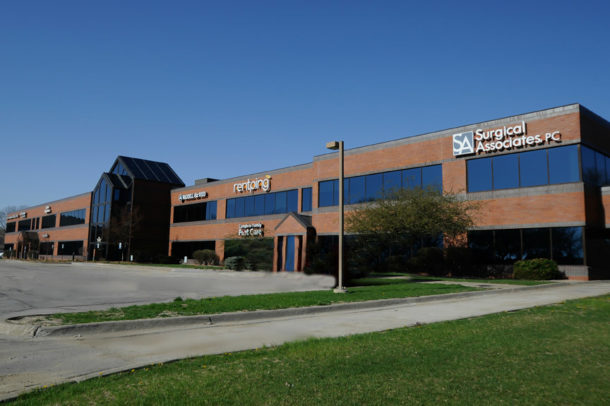Breast Cancer Division
Diagnosis & TreatmentBreast Cancer Diagnosis & Treatment
Breast Biopsy
Ultrasound studies are a great way to determine if a detected lesion is a cyst (fluid-filled sac) or a solid mass. However, the only way to determine an exact physiology is to perform a breast biopsy. This is done by taking a sample of all or some of the suspicious tissue. A biopsy can be taken in a number of ways.
- Two types of needle biopsies are used.
- Fine needle aspiration (FNA) allows a few cells and/or some fluid to be drawn (aspirated) from a lump through a thin needle into a syringe. This is done as an in office procedure.
- A core biopsy may be performed in a hospital outpatient setting. This is done using a larger needle to remove a little piece of a lump or
part of the breast tissue where the mammogram showed an area of concern.
- Sometimes surgery is needed to remove all or part of the lump so that it can be checked for cancer cells. These are usually done in an outpatient setting. For these biopsies typically a local anesthetic is given, and a sedating medication may also be used. Most people go home after the sedation has worn off.
- An incisional biopsy removes part of the lump
- An Excisional biopsy removes the whole lump, as well as a surrounding margin of normal-looking breast tissue
Simple Mastectomy
Modified Radical Mastectomy
In a modified radical mastectomy, the entire breast is removed, including the skin, areola and nipple, as well as most of the lymph nodes in the armpit area.
Modified radical mastectomy is usually recommended if the tumor is large and cancer has already spread to the lymph nodes.
Radical Mastectomy
Sentinel Lymph Node Biopsy
Male Gynecomastia
Diagnosis of gynecomastia may require several steps. Laboratory tests and imaging studies are often utilized in this process.
Most cases of gynecomastia regress over time without treatment. However, if gynecomastia is caused by an underlying condition, that condition may need treatment. If you’re taking medications that can cause gynecomastia, your doctor may recommend stopping them or substituting another medication.
In adolescents with no apparent cause of gynecomastia, the doctor may recommend periodic re-evaluations every three to six months to see if the condition improves on its own. Gynecomastia often goes away without treatment in less than two years. However, treatment may be necessary if gynecomastia doesn’t improve on its own, or if it causes significant pain, tenderness or embarrassment.
If you still have significant bothersome breast enlargement despite initial treatment or observation, your doctor may advise surgery. At Surgical Associates, PC a mastectomy is often offered when treatment is desired. This type of surgery removes the breast gland tissue.

